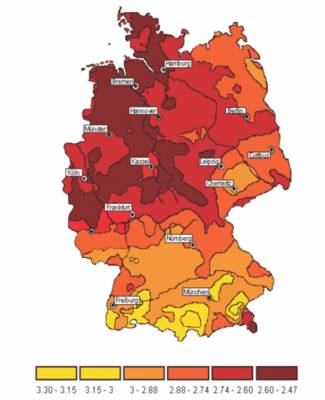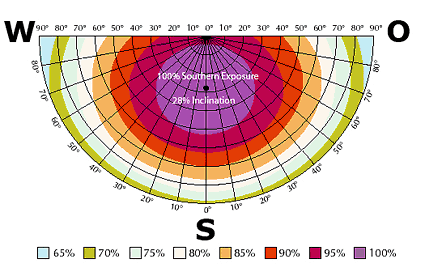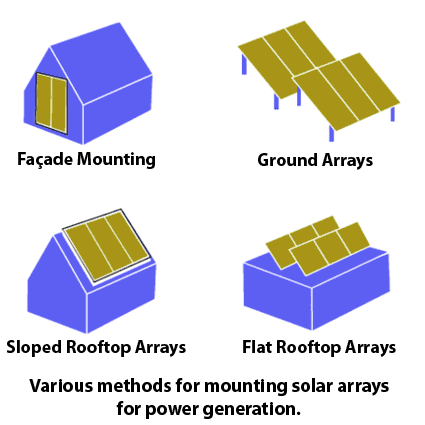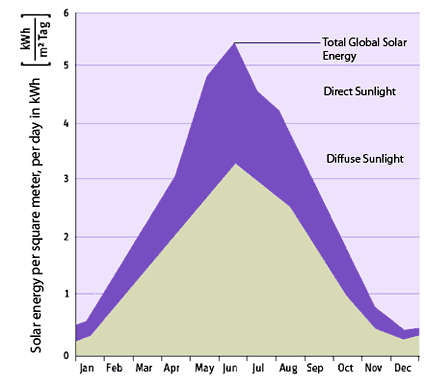Do-It-Yourself Solar-Powered PC: Technical Foundations
1,800 Hours Of Annual Sunlight
Southern Germany is better than the north end: Sunlight intensity measurements mapped
In the summertime on a cloudless day in Munich the sun delivers approximately 1100 Watts per square meter (about 102 watts per square foot). In bad weather, this drops to as low as around 100 watts (about 10 watts per square foot). The theoretical maximum efficiency for converting solar to electrical energy is around 85 percent, but because of the limited bandwidth of visible sunlight the maximum practical efficiency is more like 29 percent. The energy available from sunlight also depends on the angle at which the sun's rays strike the earth's surface as well. Axial tilt of the earth also means that this angle changes with the seasons, so that significantly less solar energy is available in winter months (especially in Germany) than in the summer, because days are shorter and the sun climbs less high into the sky.
Average solar energy per square meter in kilowatt hours per day
In the Munich area, solar cells deliver maximum energy when inclined at 28 degrees and oriented toward the south. Our own measurements show that even small errors in orientation and inclination can diminish yearly energy totals significantly. Without adjusting the solar cells daily for changes in orientation to match the sun's track across the sky, overall energy levels likewise also dip severely. Exact instructions to optimize solar cell position may be found in the second and third parts of this series of articles.
But if you plan to deploy solar cells on a rooftop, a fixed orientation is usually the only kind that's feasible. With a southwest or southeast facing roof and an inclination of 45 degrees, for example, you need to install a larger solar array, to match the same energy output at a 28 degree inclination facing south. If you're willing to take that kind of approach, however, nearly any rooftop area may be used for solar panels, as the following illustrations indicate.
Optimal energy delivery occurs at an inclination of 28 degrees toward the south
Possible mounting strategies for rooftop solar panels
Get Tom's Hardware's best news and in-depth reviews, straight to your inbox.
When it comes to use of solar panels, there are profound differences between northern and southern Germany, as there will be in other parts of the world. The closer one gets to the equator, the more usable solar energy becomes available, which explains why more southerly regions generally do better when it comes to making use of solar energy. Thus, for example, Munich receives nearly 1800 hours of sunlight per year. Despite changeable weather conditions, the month of July routine attains 260 hours of sunlight, an amount that produces an enormous energy output for solar panels at optimal inclination and orientation. The following tips should help those interested in using solar cells to drive PCs (and eventually others) achieve the best results:
- an area as free of shade as possible (rooftop or unshaded ground area)
- Roof orientation from east to west is workable, but best energy outputs come from southerly rooftops inclined between 20 and 40 degrees
- sufficient solar panel surface area for desktop PC use
- good ventilation or air circulation around solar panels for cooling (helps energy efficiency)
- optimal energy delivery occurs when solar panels can be oriented to match the sun's exact celestial position
The highest global levels of sunlight occur during the summer months
The southern advantage: Sunlight hours in June 2007
Current page: 1,800 Hours Of Annual Sunlight
Prev Page Generate Your Own Juice Next Page Solar Cell Types: Up To 25% Efficient




